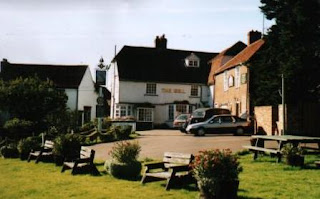My New Blog
Thanks for your interest.

 Do you want to control the fat and salt in your diet? Why not try a centuries’ old custom of keeping a stock pot? What could be better than a nutritious and flavorful base for soups, stews and sauces? It’s easy to do, full of goodness and may help reduce high blood pressure. Yes, I know it’s convenient to use a little cube or take a spoonful of paste instead of using a cup of homemade stock; I’ve done so myself many times over the years but when I look at the amount of sodium in some of these products, I actually feel guilty adding it to my recipe.
Do you want to control the fat and salt in your diet? Why not try a centuries’ old custom of keeping a stock pot? What could be better than a nutritious and flavorful base for soups, stews and sauces? It’s easy to do, full of goodness and may help reduce high blood pressure. Yes, I know it’s convenient to use a little cube or take a spoonful of paste instead of using a cup of homemade stock; I’ve done so myself many times over the years but when I look at the amount of sodium in some of these products, I actually feel guilty adding it to my recipe. I came across this man on stilts walking through a park in Cozumel. Unfortunately, I did not get his name, but as you can see...he was wearing evening dress. I watched him stride across the park and literally had to run alongside him to catch up and ask for the photo. The man was very polite and accommodating, especially as he was on his way to work. He was advertising a shop called Diamonds (the logo runs down the outside of his pants) a very nice jewelry shop located on the main thoroughfare in Cozumel.
I came across this man on stilts walking through a park in Cozumel. Unfortunately, I did not get his name, but as you can see...he was wearing evening dress. I watched him stride across the park and literally had to run alongside him to catch up and ask for the photo. The man was very polite and accommodating, especially as he was on his way to work. He was advertising a shop called Diamonds (the logo runs down the outside of his pants) a very nice jewelry shop located on the main thoroughfare in Cozumel.
 Care was taken during the restoration of Pompeii. Even the vineyards were carefully reconstructed in every detail. The following information was taken from a pamphlet in the area.
Care was taken during the restoration of Pompeii. Even the vineyards were carefully reconstructed in every detail. The following information was taken from a pamphlet in the area. Over the weekend, I had the pleasure of giving an Extraordinary Places presentation to the Kum Dubl group, a fascinating and interesting study group. Many shared the stories of their lives, some remembering the dust bowl and how the sky "...turned black as though it were night...so dark was the afternoon..." said one woman. Most remembered stories their grandmothers and grandfathers had told them when they arrived from England and mainland Europe. Knowing the background and interest of my audience, I decided to title the program Connections and began researching just how many men from my own county of Essex left for the New World.
Over the weekend, I had the pleasure of giving an Extraordinary Places presentation to the Kum Dubl group, a fascinating and interesting study group. Many shared the stories of their lives, some remembering the dust bowl and how the sky "...turned black as though it were night...so dark was the afternoon..." said one woman. Most remembered stories their grandmothers and grandfathers had told them when they arrived from England and mainland Europe. Knowing the background and interest of my audience, I decided to title the program Connections and began researching just how many men from my own county of Essex left for the New World.